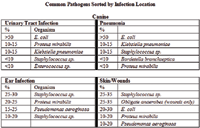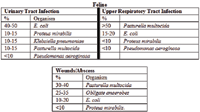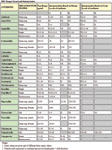New thoughts on using antimicrobials in private practice (Proceedings)
Antimicrobials are amongst the most commonly prescribed medications by veterinarians. Understanding how to properly employ these powerful drugs is the key to a successful outcome.
Antimicrobials are amongst the most commonly prescribed medications by veterinarians. Understanding how to properly employ these powerful drugs is the key to a successful outcome. Choosing the appropriate antimicrobial can be a daunting task, particularly when faced with an unusual pathogen or one which is resistant to multiple antimicrobials. Making the appropriate choice is a six step process:
1. Does the patient have a treatable infection?
2. On the surface, this question appears relatively simple to answer, however, in real-life situations it can be quite difficult. It is important to avoid the temptation to treat with an antimicrobial "just in case". Doing so makes choosing an appropriate drug a matter of guess work.
3. Where is the infection located?
4. By determining where the infection is located, appropriate cultures can be collected and the most likely pathogens identified.
5. What are the likely pathogen(s)?
6. Once the location of the infection has been identified a list of the most common pathogens can be generated. This allows empirical therapy to be implemented pending the culture and sensitivity results.
7. Which antimicrobial(s) are the most likely to work?
8. It is important to remember that we use in vitro sensitivity to predict in vivo efficacy. Properly interpreting microbial culture and sensitivity requires more knowledge that just reading which drugs are sensitive and which are resistant. A more in depth discussion of this is found below. Numerous factors can lead to treatment failure even when an "appropriate" antimicrobial is selected. These can include low drug concentration and the site of infection (i.e. CNS or prostate), poor bioavailability (oral ampicillin), and poor owner compliance with the prescribed dosing regimen.
9. What dose and route are necessary to achieve effective drug concentrations at the site of infection?
10. It is important to determine whether the drug being administered is a concentration dependent or time dependent antimicrobial as well as the half life since this will affect dosing frequency. Many commonly used drugs have a dosing range. The choice of the appropriate dose within the range will depend upon taking into account the relative sensitivity of the organism and the drug concentration at the site of infection.
11. What is the appropriate length of treatment and treatment protocol?
12. Length of treatment depends upon the chronicity and location of the infection. As a rule of thumb, acute infections require short courses, while chronic and/or inaccessible infections require longer courses of therapy.
• Acute infections (i.e. simple UTI): 7-10 days
• Chronic infections (i.e. deep pyoderma, osteomyelitis): 3-6 weeks
Relapsing vs. Recurring Infections
Relapsing infections indicate that the original infection was not totally eliminated and the clinical infection returns after therapy in discontinued. Additional testing may be indicated to determine if there is a reason for the relapse (i.e. searching for calculi after failure to clear a UTI). A reoccurring infection indicates that the bacteria were completely eliminated by the treatment and a new infection was established once the treatment was discontinued (i.e. recurrent pneumonia in a dog with megaesophagus).

Common Pathogens Sorted by Infection Location
Interpreting MIC's
It is amazing how few people understand what the numbers on the antimicrobial culture and sensitivity report mean. The minimum inhibitory concentration (MIC) is the lowest drug concentration that inhibited microbial growth (note: this does not mean the bacteria we're all killed). MIC's cannot be interpreted as absolute values since they are based upon the ability of drugs to reach a given concentration in plasma. For example, an MIC of 1μg/ml for enrofloxacin against E. coli is worse than and MIC of 2 μg/ml for amoxicillin.

Feline
Understanding how MIC's are determined:
The criteria for calling a microbe sensitive, intermediate, or resistant to for a given antimicrobial plasma concentration is determined by the NCCLS. The NCCLS looks at the data from thousands of C&S results. From this they determine the breakpoint. A breakpoint is an arbitrary criteria generally set at the point where the majority of all isolates for that microbe are inhibited. Knowing the breakpoint is a key step in choosing the appropriate antimicrobial. Unfortunately, most laboratories do not provide this information in their reports.

MIC Ranges Tested and Interpretation
Using the MIC to choose an appropriate antimicrobial:
The farther an individual organisms' MIC is from the breakpoint the more likely a drug is to be efficacious.
Example: You culture an E. coli from urine. It is sensitive to cephalothin with an MIC of 2 μg/ml. This is 4 dilutions away from the breakpoint of 32 μg/ml. It is also sensitive to trimethoprim-sulfa with an MIC of 40 μg/ml. This is one dilution away from the breakpoint of 80 μg/ml. Therefore, assuming all other factors are equal your chance of successful treatment is greater with cephalothin than trimethoprim-sulfa.

Mean Urine Concentrations of Selected Antibiotics
As a general rule, you want to avoid choosing a drug where MIC in approaching the breakpoint. If you do decide to use a drug despite the MIC being near the breakpoint you should select the high end of the dose range. In addition, you want to be careful when selecting an antimicrobial listed as intermediate unless you feel you can obtain high drug concentrations at the site of infection (i.e. urinary tract infection).
Reference:
Infectious Diseases of the Dog and Cat, Greene, 2nd ed, W.B. Saunders, 1998.
Suggested reference:
Aucoin D. Target: The Antimicrobial Reference Guide to Effective Treatment. Port Huron, MI: North American Compendiums Inc., 2000.
Podcast CE: A Surgeon’s Perspective on Current Trends for the Management of Osteoarthritis, Part 1
May 17th 2024David L. Dycus, DVM, MS, CCRP, DACVS joins Adam Christman, DVM, MBA, to discuss a proactive approach to the diagnosis of osteoarthritis and the best tools for general practice.
Listen